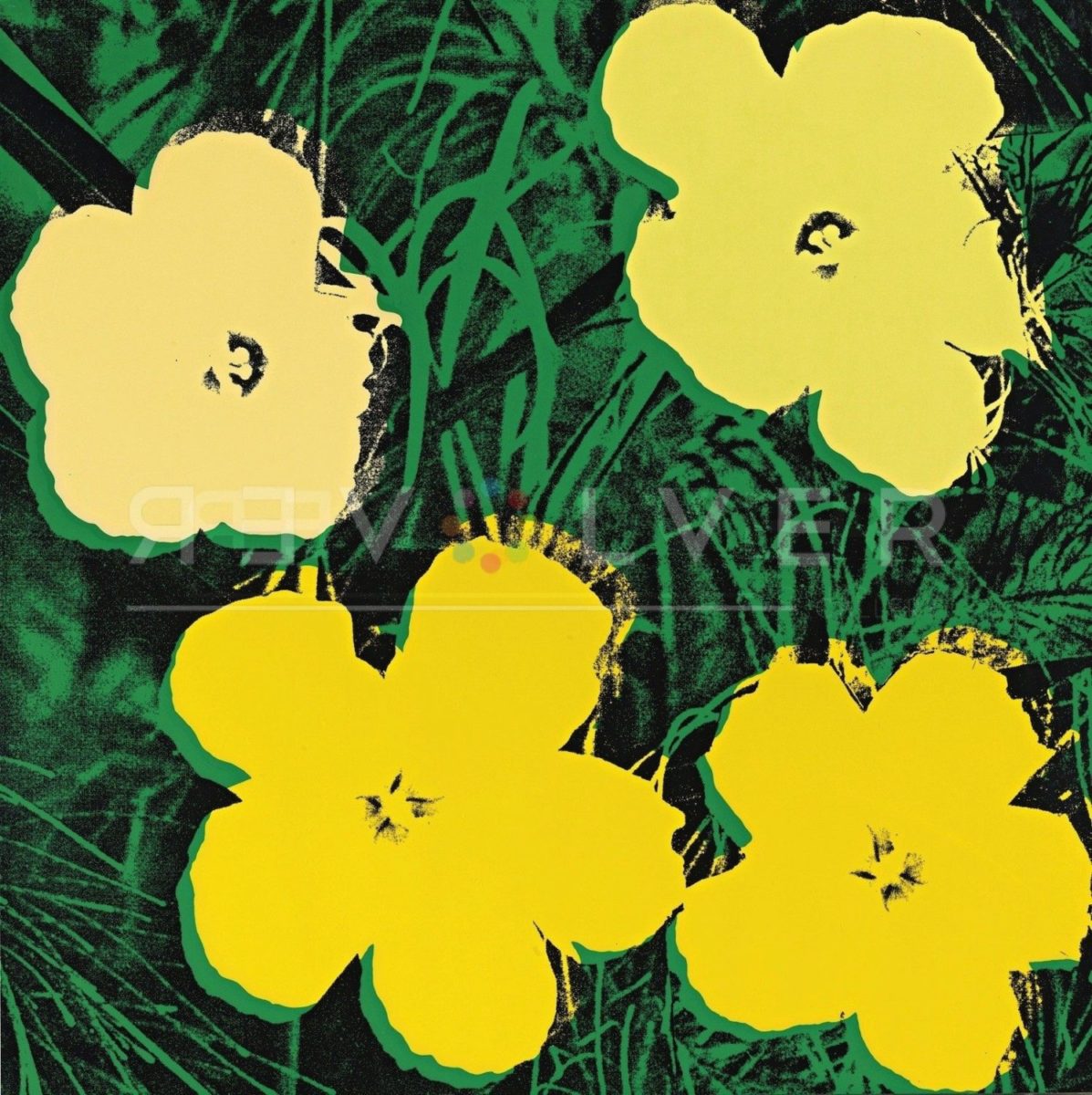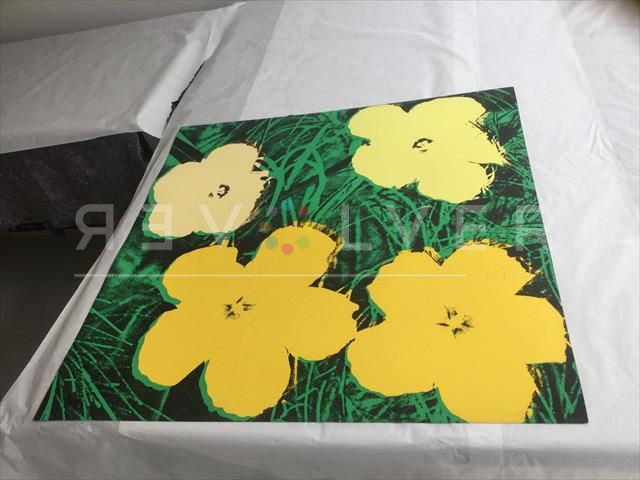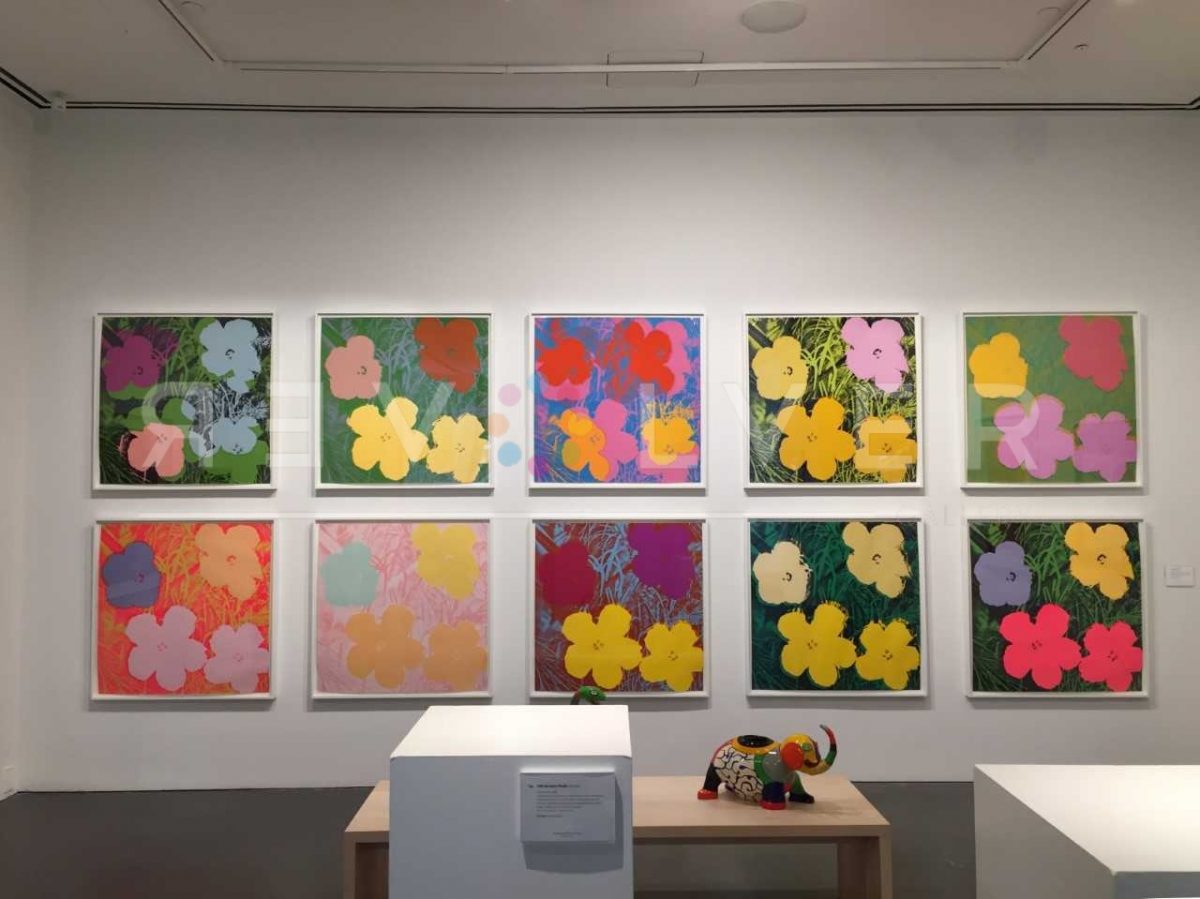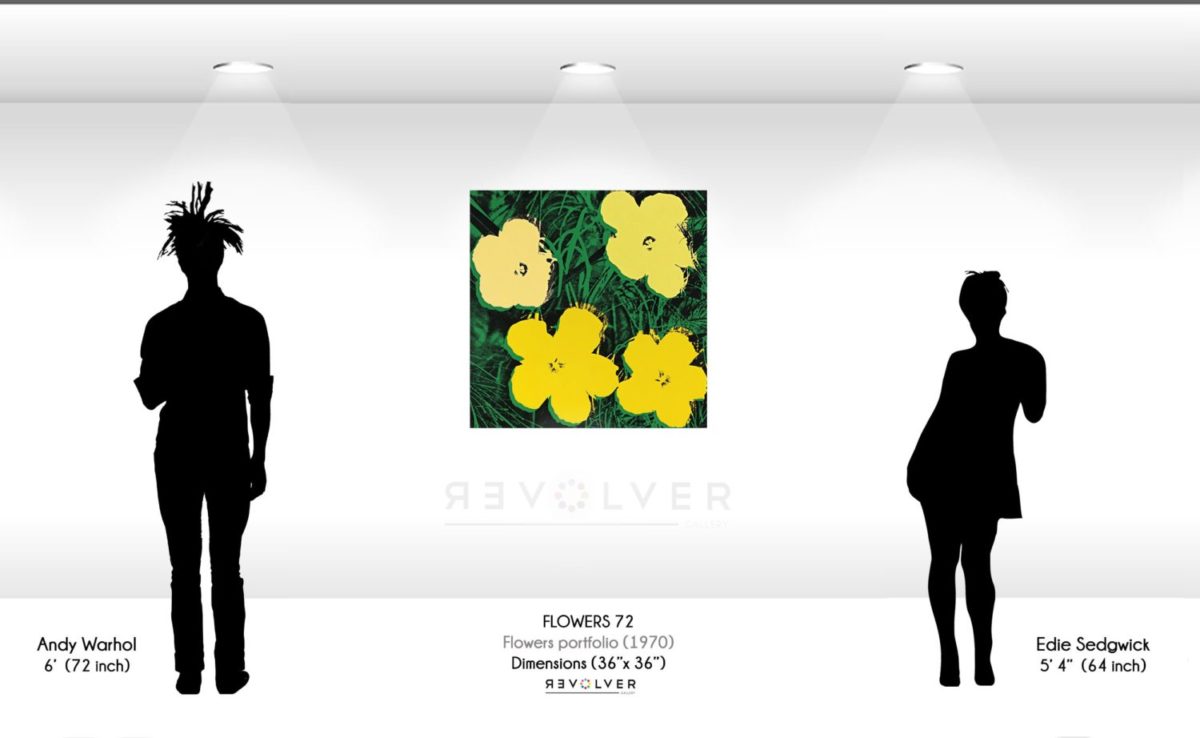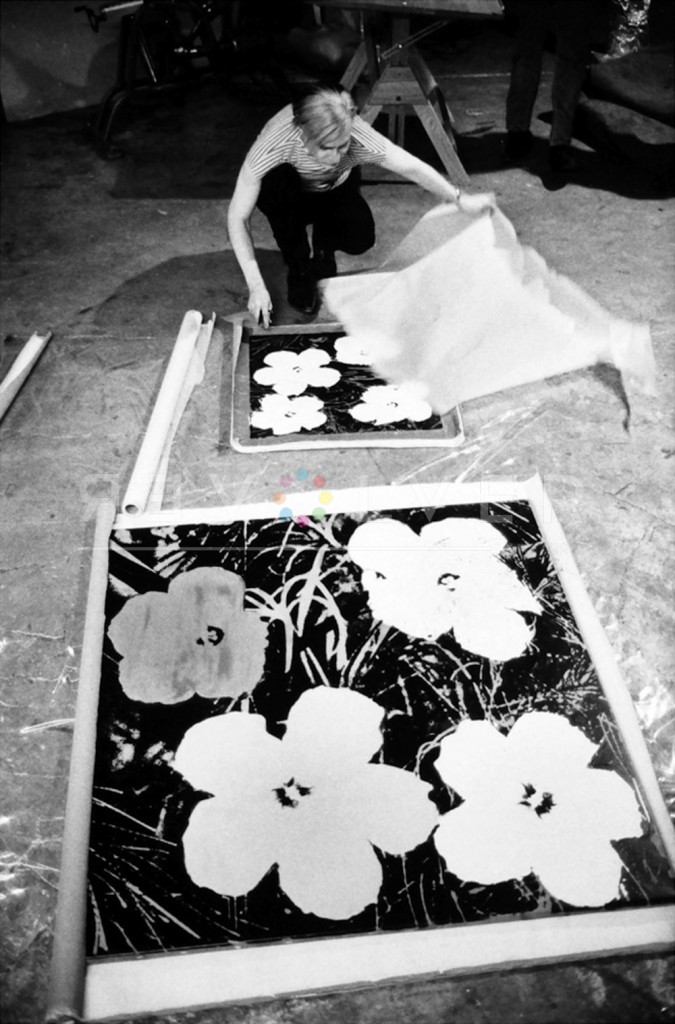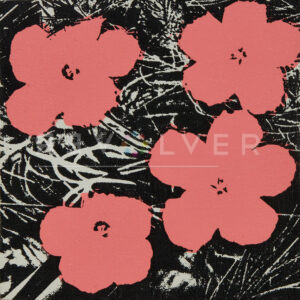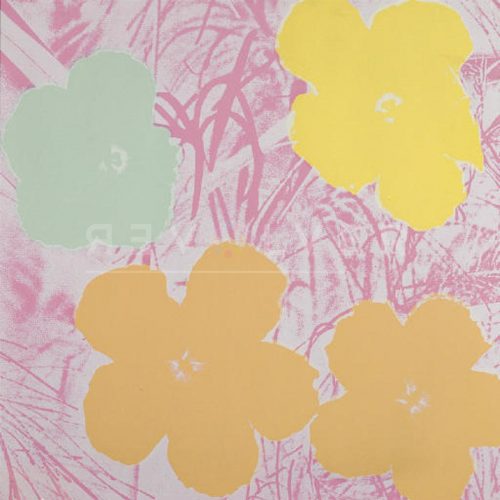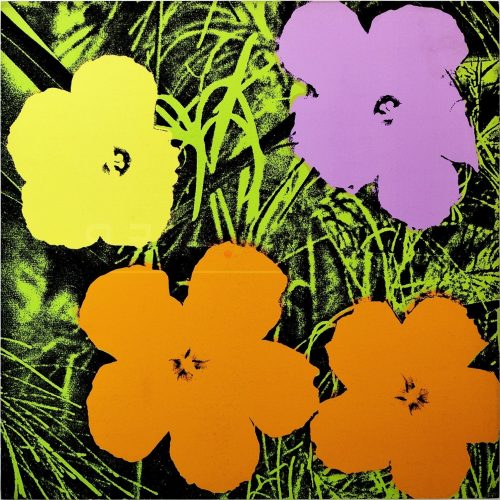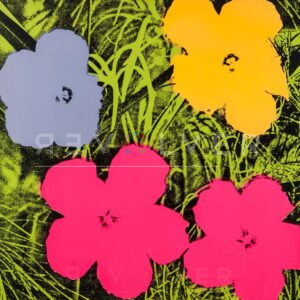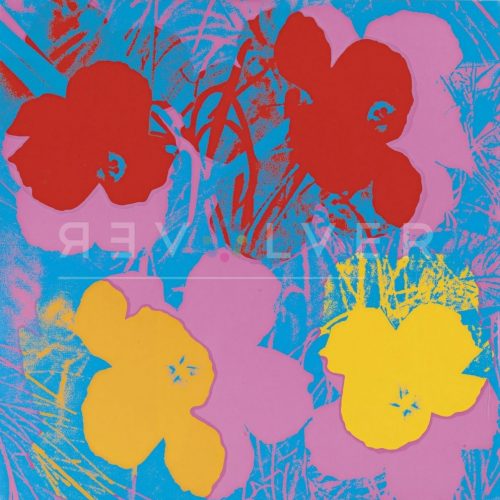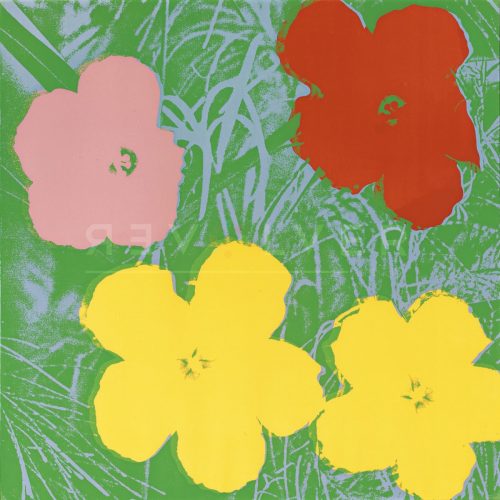Flowers 72 by Andy Warhol is one of ten screenprints from the Flowers series (1970), containing some of the artist’s most beloved images. Warhol originally created Flowers in 1964, and would later screenprint them in 1970. With its delicate depiction of nature, Andy Warhol’s Flowers proved the versatility of the Pop Art aesthetic and remains one of the most sought-after by collectors. The series is based on a photograph of hibiscus flowers by Patricia Caulfield from a 1964 copy of Modern Photography. Though Warhol often appropriated imagery for the basis of his silkscreens, Flowers saw Warhol’s first lawsuit for using copyrighted material.
The Flowers series was actually a dramatic departure from what Warhol had been working on before–his notorious Death and Disaster series. The loose collection of works included images like Birmingham Race Riot, and the original Electric Chair (1964) screenprints. Warhol’s idea to paint flowers came from his friend Henry Geldzahler. At the time, Geldzahler was the assistant curator at the Metropolitan Museum of Art. Interestingly, he also inspired Warhol to start the Death and Disaster works. He later told Warhol that his recent images were too full of tragedy and despair.
While the Death and Disaster collection drew fierce backlash for depicting upsetting and contentious subjects, Flowers celebrated a universal symbol of peace and delicateness. However, the timing and proximity of the two series might suggest that both projects are related. While Flowers symbolizes the beauty and fragility of life, the Death and Disaster series signifies the tragedy and horror of that same fragility.
One of Warhol’s defining artistic talents was his ability to make ordinary things extraordinary. By depicting consumer goods and celebrities, he was able to elevate common cultural material to the status of fine art. Warhol held controversial views of artistic value, but they ultimately changed how we define and think about art itself. Flowers represents this same principle applied to perhaps the most familiar concept of all: nature. Therefore, Warhol’s scope includes all wide-spread or universally recognized symbols, and resists limitation to cultural touchstones. In this view, brand labels and celebrity faces have the same artistic merit and symbolic weight as flowers.
Flowers 72 is one of the most understated, yet one of the most interesting, prints in the series. Warhol styled its dark green background with an almost realistic bush or grass coloration. In spite of the energetic hand-drawn detailing, this gives the painting a uniquely grounded feel. The flowers are all different, but similar, shades of yellow. This makes for a vivid contrast against the background (albeit in a more muted way than Warhol’s more outlandish colorations). The end result is a print that reinvents the Pop-art aesthetic as an exhaustive and delicate pastiche of nature. Thus, Flowers 72 shows an extraordinary sincerity from the artist, and makes a delightful contribution to the already spectacular Flowers portfolio.
Photo credit: Andy Warhol silk-screening Flowers, 1965-7. Photo by © Stephen Shore.

